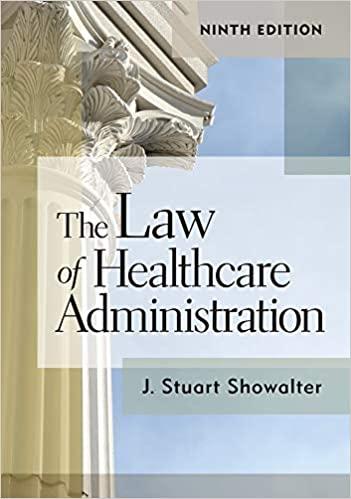Question
Each questionmust be fully developed, applying the facts and the specific Constitutional Amendment (4th, 5th, 6th, 8th and 14th) and Supreme Court decisions that support
Each questionmust be fully developed, applying the facts and the specific Constitutional Amendment (4th, 5th, 6th, 8th and 14th) and Supreme Court decisions that support your conclusions. There may be several issues or individuals in the fact patterns and your response must include each issue and each individual.
- A suspect has been charged with controlled substance distribution and is in jail awaiting trial on that charge. He is represented by Bart, a prominent local attorney, on this controlled substance charge. Bart admonishes the police not to question his client regarding any aspect of the drug offense and police assure Bart that no questioning will take place. One of the informants on this controlled substance investigation has been missing for a week. Police believe the suspect had something to do with the disappearance. Police place an undercover officer in the suspect's cell block and instruct him to see if he can draw information from the suspect on the informant's disappearance. The suspect confides to the undercover officer that he is sure that the informant ""won't be seen or heard from again, if you know what I mean." However, the suspect says nothing else regarding details of the victim's fate but offers that he is concerned about his wife turning on him.
Police next approach the suspect's wife, who is in the process of divorcing the suspect. Some of suspect's belongings are still at her house. Police ask if she will consent to a search of her home and to forensic testing of any evidence and she gladly agrees. During the course of this consent search, police locate some helpful evidence, including a sawed-off shotgun and a slip indicating the suspect has rented a storage shed. Police approach the storage shed owner and request his consent to search the suspect's shed. The owner agrees to consent, observing that suspect is in default under his agreement and that he was about to deem the suspect's shed as abandoned. During the course of searching the suspect's shed, police find a car and numerous boxes of clothing. The car contains signs of a violent act, including blood and bone fragments. Possessed with this information, police approach the suspect and ask if he would like to discuss the informant's disappearance. The suspect agrees and police read him Miranda. The suspect waives his rights and agrees to talk. Police present a detailed theory of the informant's murder to suspect, including references to a sawed-off shotgun and the storage shed, and falsely tell the suspect that all of the scientific evidence points to him as the killer. (In fact, no testing has yet been done.) The suspect breaks down and confesses to the murder of the informant.
Discuss all issues that you see regarding this case , including the admissibility of
- the suspect's statements to the officer in the cell block,
- the evidence obtained from the search of the wife's dwelling,
- the evidence obtained from the search of the shed,
- the evidence obtained from the suspect during his confession to the murder.
Step by Step Solution
There are 3 Steps involved in it
Step: 1

Get Instant Access to Expert-Tailored Solutions
See step-by-step solutions with expert insights and AI powered tools for academic success
Step: 2

Step: 3

Ace Your Homework with AI
Get the answers you need in no time with our AI-driven, step-by-step assistance
Get Started


